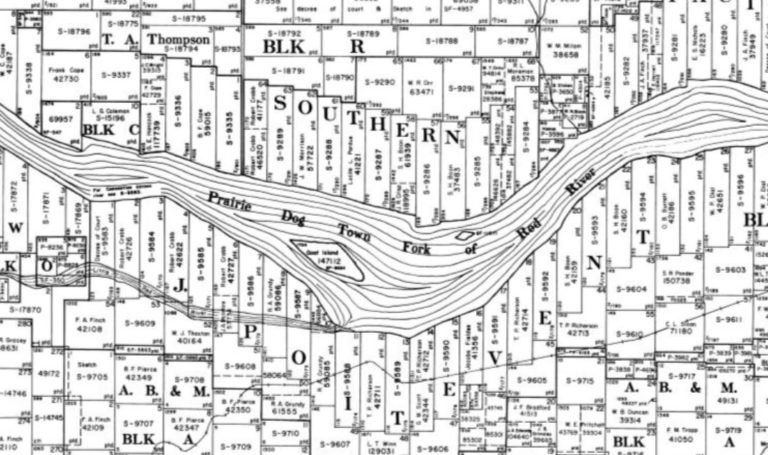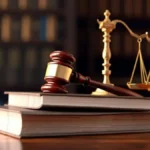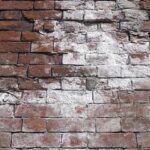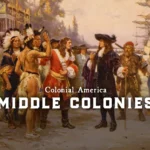Understanding metes and bounds matters because it remains one of the oldest, most resilient ways to describe land even in a world of GPS, GIS databases, and digitized property records. If someone searches for this term today, they usually want one thing: a clear, human explanation of how metes and bounds work, why they exist, and how to read or use such descriptions when dealing with land, property disputes, or real estate transactions. This article provides exactly that by breaking down the system in plain English, giving historical context, showing examples, and explaining its continued relevance. Metes and bounds isn’t simply an old surveying habit. It is a cultural record, a legal map, and an evolving measurement system all at once. In many parts of the world including the U.S.’s original colonies, regions of South Asia, parts of the U.K., and countless rural areas metes and bounds still shape property rights, local identities, and the way land is transferred from one generation to the next. This guide explores the system from every angle: its origins, its language, its legal significance, its modern challenges, and its enduring importance.
Key Elements of the Metes and Bounds System
| Feature | Meaning | Why It Matters |
|---|---|---|
| Metes | Measurements of distance and direction | Defines the exact path of a boundary line |
| Bounds | Landmarks, features, or adjoining properties | Provides physical reference points that anchor the description |
| Point of Beginning (POB) | Fixed starting reference for the survey | Ensures the boundary can be reproduced consistently |
| Calls | Individual instructions describing each boundary segment | Creates a complete, traceable outline of land |
| Natural Monuments | Trees, rivers, stones, hills | Historically used; legally powerful but subject to change |
| Artificial Monuments | Walls, stakes, fences, posts | More stable than natural markers, clearer in modern surveying |
| Bearings | Compass-based directional descriptions | Creates precise navigational steps between points |
| Distances | Length of each boundary segment | Establishes measurable edges of land |
| Closure | When the final boundary line returns to the POB | Confirms accuracy and prevents overlapping claims |
| Modern Supplements | GPS, digital surveying, GIS mapping | Strengthens historical descriptions with modern precision |
1. What “Metes and Bounds” Really Means
The phrase “metes and bounds” may sound archaic, but its meaning is surprisingly straightforward.
- Metes refers to distance and direction essentially the measurable path of a line.
- Bounds refers to the features or neighboring properties that help identify where those lines lie.
In simple terms, metes tell you how far and which way, while bounds tell you near what. A full metes and bounds description creates a closed loop that outlines a parcel of land. If you followed the description on foot using the bearings, distances, and referenced landmarks—you could physically walk the perimeter of the property. Although modern land records often use standardized grid systems, metes and bounds continue to persist because they deal gracefully with irregular shapes, historical plots, and rural landscapes where boundaries were set long before standardized systems existed.
2. The Ancient Origins: Why Metes and Bounds Became the First Land Language
Metes and bounds predates written law, organized government, and even large-scale agriculture. Humans needed a way to define “this area is mine, that area is yours” long before written measurements existed. Natural features an oak tree, a river bend, a pile of stones were the earliest boundary markers. Ancient civilizations such as Mesopotamia, Egypt, Greece, and Rome recorded boundaries using a mix of natural and human-made markers. This practice spread because it offered flexibility:
- It worked in mountainous areas.
- It worked in forests.
- It worked along rivers.
- It worked when land was irregular, rugged, or non-geometric.
The system became deeply embedded in English common law and eventually traveled with colonists. In many parts of the world today, this inherited patchwork of descriptions forms the backbone of property ownership.
3. Why Metes and Bounds Persist in the Modern World
If GPS can pinpoint a location down to centimeters, why do we still rely on a centuries-old system? The answer is simple: property rights do not reset with new technology. Land is inherited, bought, sold, gifted, divided, and merged over centuries. If a boundary was originally described using metes and bounds, that description remains the legal foundation unless formally changed.
Metes and bounds persists because:
1. Historical continuity matters
A family farm described by a 1785 deed still uses the same description today.
2. Legal systems depend on consistency
Courts need stable reference points; they cannot discard old boundary language every time mapping technology advances.
3. Land rarely fits into perfect rectangles
Metes and bounds handles curves, slopes, odd shapes, and natural edges gracefully.
4. Cultural attachment to land features
Communities often identify land with local names and physical markers that transcend modern coordinates.
5. Flexibility in rural and forested areas
Surveying grid systems struggle where the terrain prevents straight-line mapping.
For these reasons and because it captures the personality of land metes and bounds remains central to property law.
4. Anatomy of a Metes and Bounds Description
A proper description includes several key components. Understanding these transforms a confusing legal block of text into a clear illustration.
Point of Beginning (POB)
The POB is the anchor. Everything else radiates from this point. It must be well-defined and stable, such as:
- a concrete monument
- a government survey marker
- a recorded coordinate
- a road intersection
- a recognized property corner
Without a reliable POB, the entire description becomes questionable.
Calls
A “call” describes a single boundary line. It contains:
- Direction (bearing)
- Distance (usually in feet or meters)
- Reference (a monument or neighboring property)
Example:
“North 68 degrees East, 120 feet to a marked oak tree.”
Bearings
Bearings usually use quadrants:
- northeast (NE)
- southeast (SE)
- southwest (SW)
- northwest (NW)
This ensures clarity. You never simply say “180 degrees.” You say “South 00° West.”
Distances
Distances are typically measured in:
- feet
- meters
- chains (historical)
- rods (historical)
Despite these archaic units, the underlying measurements remain surprisingly precise.
Monuments
Monuments are among the most significant elements because courts often favor them over written distances when resolving disputes.
Natural Monuments
Trees, streams, ridges, boulders
→ Legally powerful but unstable over centuries.
Artificial Monuments
Iron pins, stone markers, walls, fences
→ More reliable and preferred in modern surveys.
5. A Realistic Example of a Metes and Bounds Description
Below is a simplified example written in a modernized, reader-friendly tone:
“Beginning at a concrete monument located at the southwest corner of Lot 12;
thence North 22° East, 210 feet to a stone wall;
thence following said wall South 68° East, 140 feet to a marked cedar post;
thence South 15° West, 260 feet to an iron pin;
thence North 88° West, 120 feet returning to the Point of Beginning.”
Even without a map, the description outlines a clear shape. The combination of bearings, distances, and monuments links the property to physical reality.
6. Why the System Can Be Difficult to Read Today
People often struggle with metes and bounds because:
1. Landmarks have changed or disappeared
A “white oak” mentioned in 1880 may no longer exist.
2. Measurements were not always consistent
Chains, rods, and steps could vary slightly depending on who used them.
3. Descriptions sometimes rely on local knowledge
References like “Smith’s pasture” or “the old well” may make no sense today.
4. Deeds were handwritten and imperfect
Spelling variations, miscopied bearing angles, or missing calls can create confusion.
5. The language is legalistic
Terms like “thence,” “hence,” and “continuing with the meanders of the creek” sound unfamiliar.
Despite these challenges, surveyors are trained to interpret old descriptions correctly.
7. Modern Technology Meets an Ancient System
The biggest shift in the last 30 years is how surveyors integrate older descriptions with:
- GPS
- Geographic Information Systems (GIS)
- Drone-based photogrammetry
- LiDAR
- Digital parcel mapping
These tools create accurate, scalable, digital representations of irregular parcels. Instead of replacing metes and bounds, technology strengthens it.
Today, a surveyor might:
- Load the old metes and bounds description.
- Digitize each call into a GIS mapping system.
- Overlay the shape onto modern aerial imagery.
- Confirm or adjust the boundaries based on visible landmarks.
- Install new artificial monuments for future stability.
Thus, the system becomes more precise without losing historical continuity.
8. Legal Weight: What Counts Most in a Boundary Dispute
Courts often rely on a hierarchy when evaluating conflicting elements in a metes and bounds description. Generally, the priority is:
- Natural monuments
- Artificial monuments
- Adjacent boundaries
- Distances
- Bearings
- Computed area
If a deed says a boundary ends “at the center of the stream,” the stream’s path usually trumps a written distance. This hierarchy reflects the system’s deep roots: physical reality outranks human error.
9. Land Culture: How Metes and Bounds Shapes Identity
In many communities, boundaries are not just legal lines. They are stories. They mark family ties, generational histories, and local memory.
A boundary might run:
- through “Grandfather’s Pine Grove”
- past “the old cattle spring”
- along “the ridge where the hawks nest”
Such descriptions show how intimately people knew the land. Even as modern mapping replaces this language with coordinates, the sense of place remains.
10. Challenges That Still Face the System Today
1. Vanishing Landmarks
Storms, floods, development, and time erase natural markers.
2. Overlapping Claims
Two deeds might describe overlapping land, especially if handwritten mistakes occurred.
3. Misinterpretation
Old descriptions can be ambiguous.
4. Fractionalized Inheritance
Metes and bounds parcels often become irregular with each generation’s subdivisions.
5. Technological Mismatch
New mapping systems prefer coordinate geometry; older descriptions resist perfect translation.
Despite these issues, the system remains legally and culturally anchored.
11. Benefits of Metes and Bounds in Modern Land Use
Even today, metes and bounds offers advantages:
- Flexibility for irregular parcels
- Precision when monuments are well-chosen
- Detail that captures physical reality
- Continuity with historical documents
- Human readability when written clearly
It remains especially useful in rural, wooded, mountainous, or historically settled areas.
12. A Modern, Reader-Friendly Rewrite of a Traditional Description
Below is a contemporary interpretation designed for absolute clarity:
“Start at the bronze survey marker at the northwest corner of the property.
Follow the paved road east for 346 feet until reaching a wooden fence corner.
Turn southeast and continue 192 feet along the fence until reaching the stream.
Follow the stream southward for 410 feet to the waterfall ledge.
Turn west and travel 298 feet across the field to the large stone marked ‘X.’
Return north 256 feet to the starting marker.”
This description demonstrates how simple and visual metes and bounds can be if written with clarity.
13. The Future of Metes and Bounds
Though technology continues to advance, metes and bounds will remain part of land law because:
- It is embedded in legal systems.
- It handles irregular shapes better than grids.
- It preserves historical property boundaries.
- It captures descriptive detail absent from coordinates.
- It complements modern GPS surveying rather than conflicting with it.
Future innovations may include:
- Real-time 3D boundary visualization
- Machine-learning interpretation of old deeds
- Automated detection of inconsistencies in descriptions
- Printable augmented-reality boundary overlays
- Blockchain-based, tamper-proof metes and bounds databases
In short, the system is not disappearing it is evolving.
Final Thoughts
Metes and bounds is more than a method of describing land. It is a living archive. It preserves history, defines identity, and supports modern legal systems. For surveyors, landowners, developers, and anyone dealing with property boundaries, understanding metes and bounds provides clarity and confidence. Even in a digital era, this centuries-old system remains essential because it blends measurement with meaning. It shows not just where land lies, but how people once saw it and how they still do.











